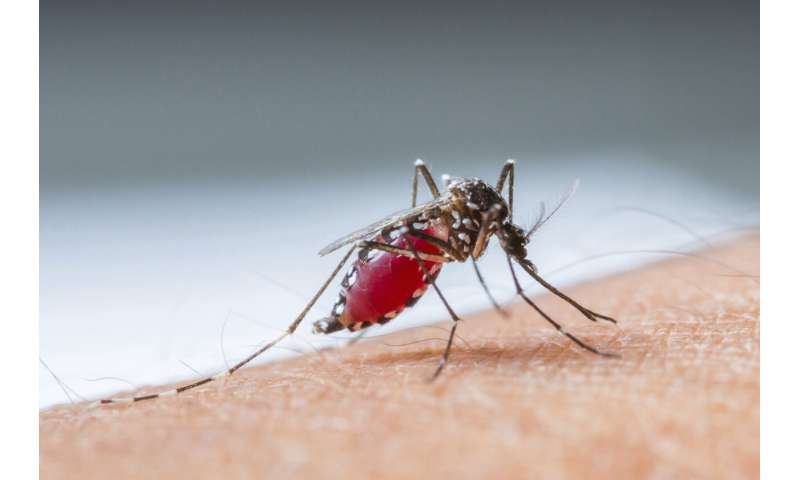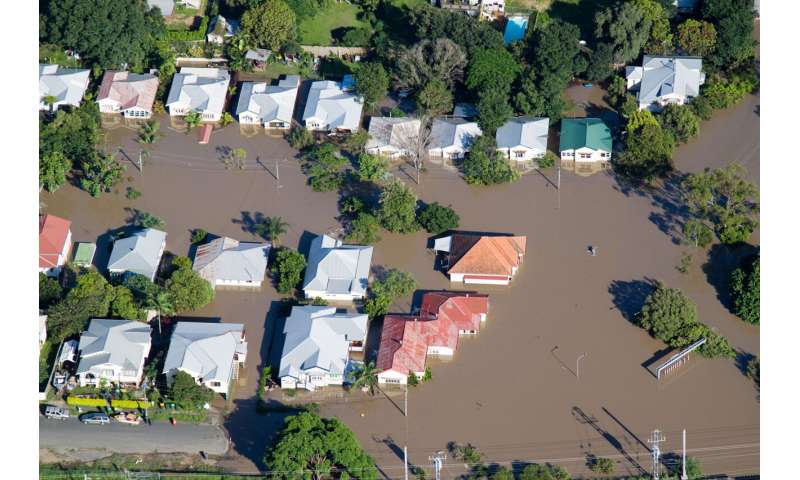A new study published in The Lancet Planetary Health suggests a changing climate threatens the continuous availability of safe blood across the world.
Researchers at the University of the Sunshine Coast and Australian Red Cross Lifeblood say health issues, the spread of infectious disease and extreme weather exacerbated by climate change will impact the ability of people to donate, and at the same time may trigger a rise in the need for blood.
Lifeblood researcher and UniSC Adjunct Research Fellow Dr. Elvina Viennet said this threatened the safety and supply of life-saving blood products crucial for surgeries, trauma care, chronic disease management—and saving lives in emergency situations.
“Warmer temperatures and natural disasters such as heat waves, floods, cyclones and bushfires are expected to become more frequent and severe,” Dr. Viennet said.
“As well as limiting the mobility of large numbers of people, these events disrupt the storage, safety, and transportation of blood, which has a short shelf life.
“We experienced this recently with ex-Tropical Cyclone Alfred in Australia, when an extreme weather event drastically reduced national blood supplies for the first time.”
Lead researcher, UniSC Associate Professor Helen Faddy, said the study was the first to globally examine how a changing climate could affect each stage of the blood supply chain, based on a comprehensive literature review of international studies.
“While many studies have explored the broader health effects of climate change, we sought to fill gaps in understanding the full extent of the risks—from donor health and collection logistics to the processing, storage and distribution of products,” she said.
The findings suggest climate change may impact some infectious diseases that can be transmitted via blood and can prevent people from donating.
“For example, predictions of increased rainfall and warmer temperatures in certain regions, including Australia, could intensify mosquito-borne diseases such as Dengue Fever, West Nile Virus and Malaria, and potentially see them spread to new areas,” Dr. Faddy said.
-

Bags of blood emergency blood type. Credit: Australian Red Cross Lifeblood
-

Mozzie sucking blood. Credit: Australian Red Cross Lifeblood
“At the same time, shifts in disease prevalence and natural disaster frequency could increase the demand for blood transfusions due to conditions such as pregnancy complications, cardiovascular disease and sickle cell disease.
“We could also face greater difficulty in finding the right blood for patients. With rising sea levels increasing migration rates, it’s essential to have more donors from a variety of ethnic backgrounds, and to increase the number of people who give blood.”
Less obvious health conditions and heat-related illness could also impact donors, staff, and volunteers.
“We could see new diseases emerge, health issues such as blood pressure and hydration that are exacerbated by heat, as well as psychological distress and ‘climate anxiety’, impact donors,” she said.
-

Fires. Credit: Red Cross Lifeblood
-

Flooding due to climate change. Credit: Australian Red Cross Lifeblood
The study emphasizes the need to reduce reliance on traditional blood supply chains and have adaptable strategies that offer rapid responses to climate-related challenges.
The researchers recommend governments and blood services can prepare with critical tools such as early warning systems, disease surveillance, flexible approaches to donor eligibility and blood transport in emergencies, hospital preparation, and expanding collection services so donations can be relocated quickly.
“Recent global innovations include cell salvage techniques during surgery, the use of drones to transport blood when other transit is disrupted, and walking blood banks, which collect donations at the site of crises,” Dr. Faddy said.
“As our environment evolves, we need to reduce reliance on traditional blood supply chains and have adaptable strategies that offer rapid responses to climate-related challenges.”
More information:
Blood under pressure: How climate change threatens blood safety and supply chains, The Lancet Planetary Health (2025). www.thelancet.com/journals/lan … (25)00051-8/fulltext
Provided by
Australian Red Cross Lifeblood
Citation:
A changing climate may jeopardize global blood supply (2025, April 16)
retrieved 17 April 2025
from https://medicalxpress.com/news/2025-04-climate-jeopardize-global-blood.html
This document is subject to copyright. Apart from any fair dealing for the purpose of private study or research, no
part may be reproduced without the written permission. The content is provided for information purposes only.

